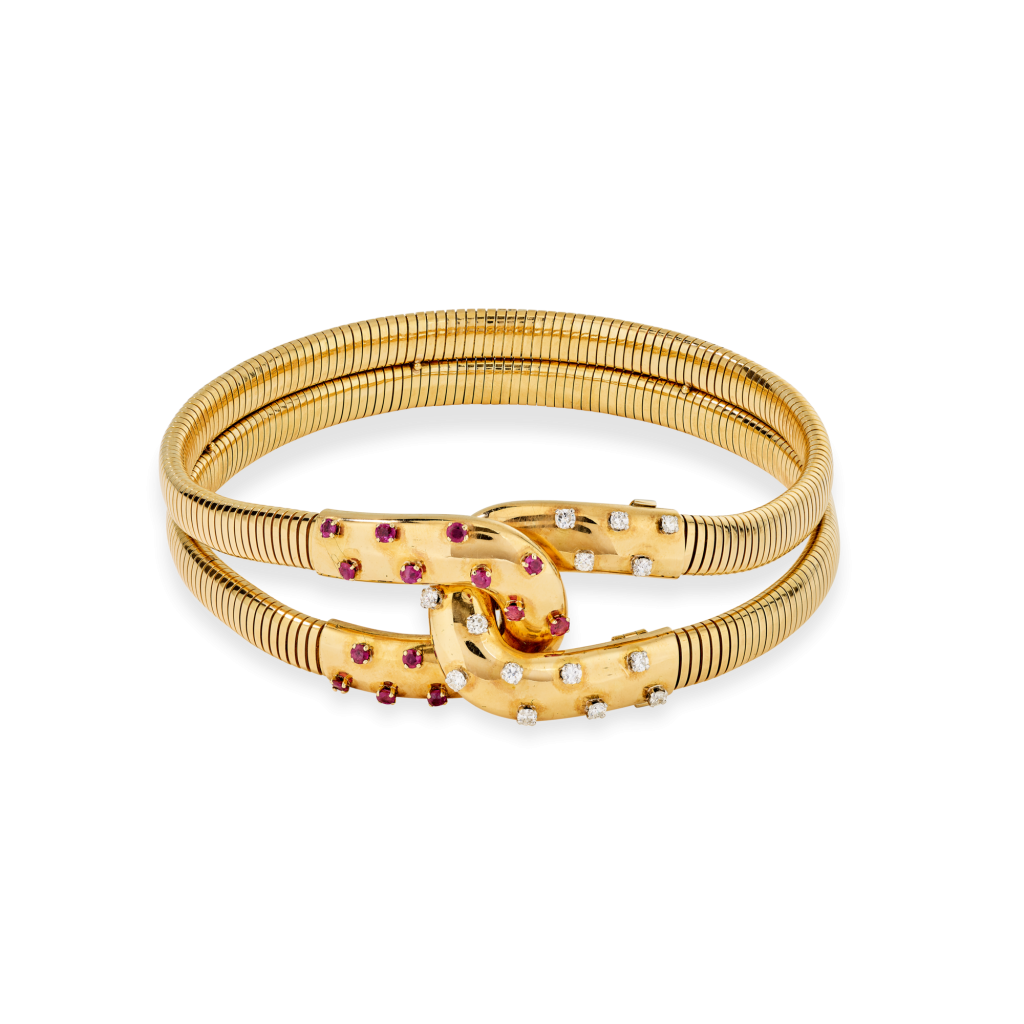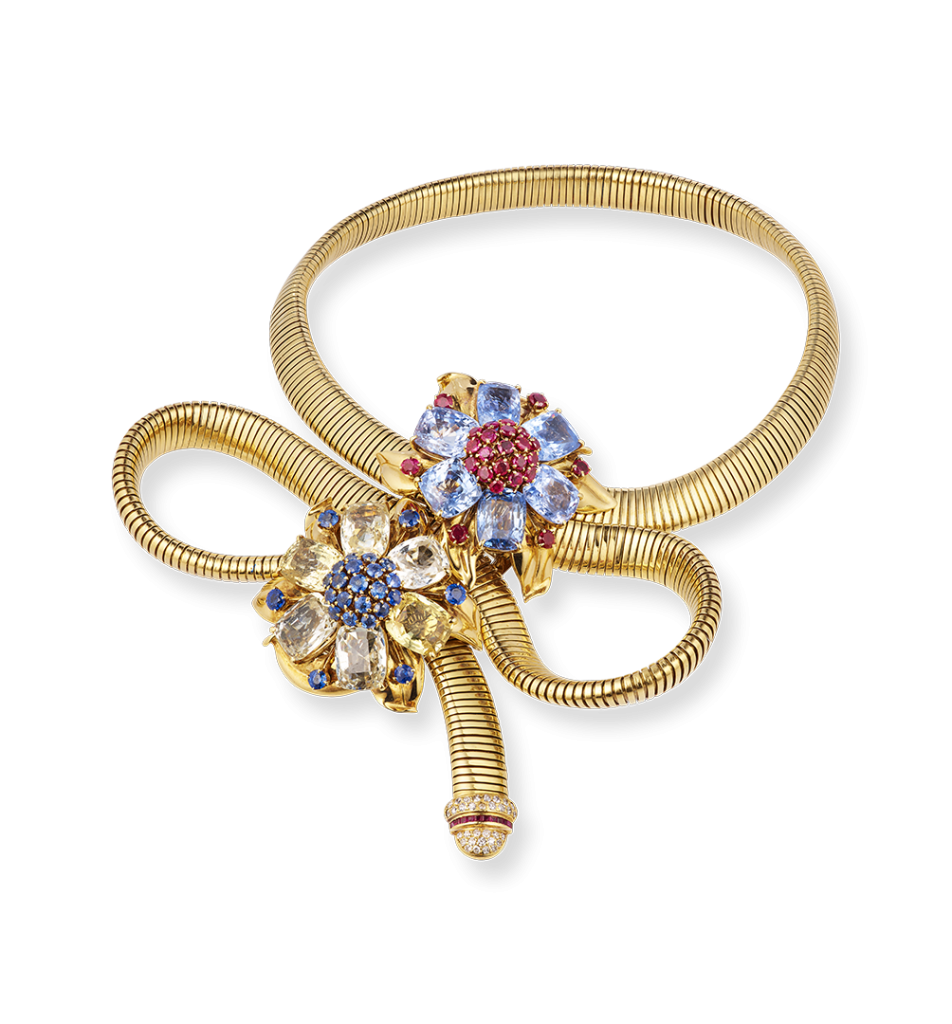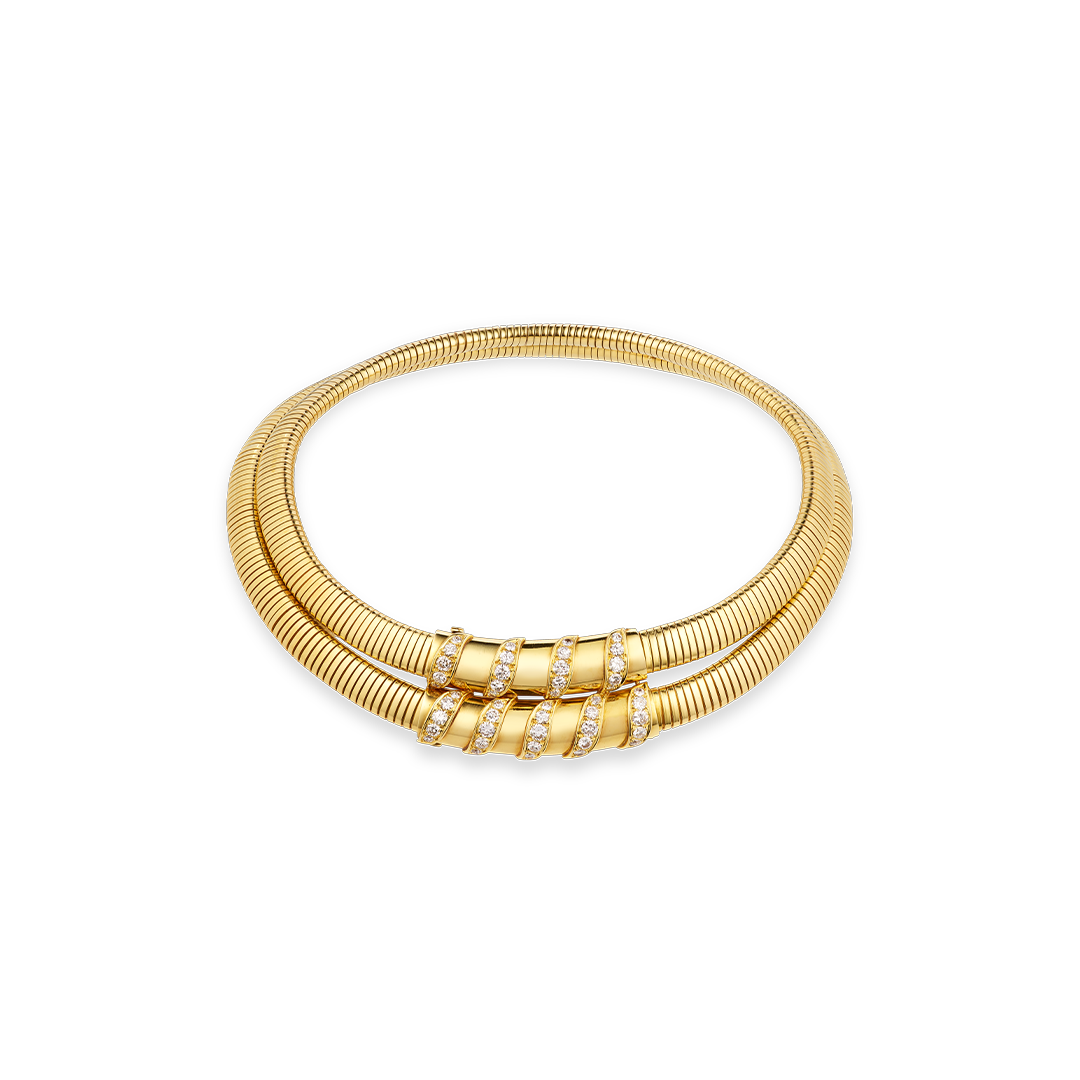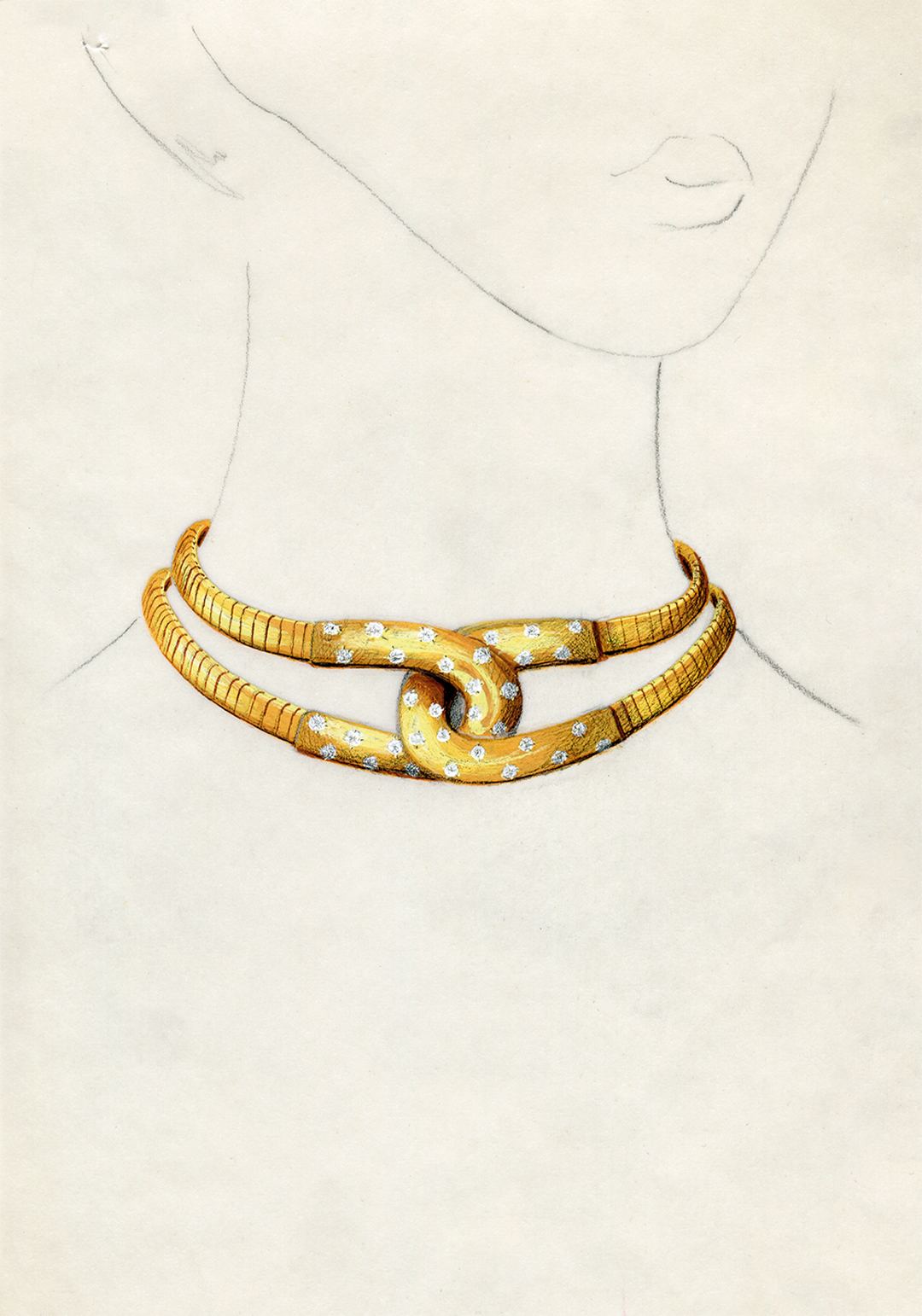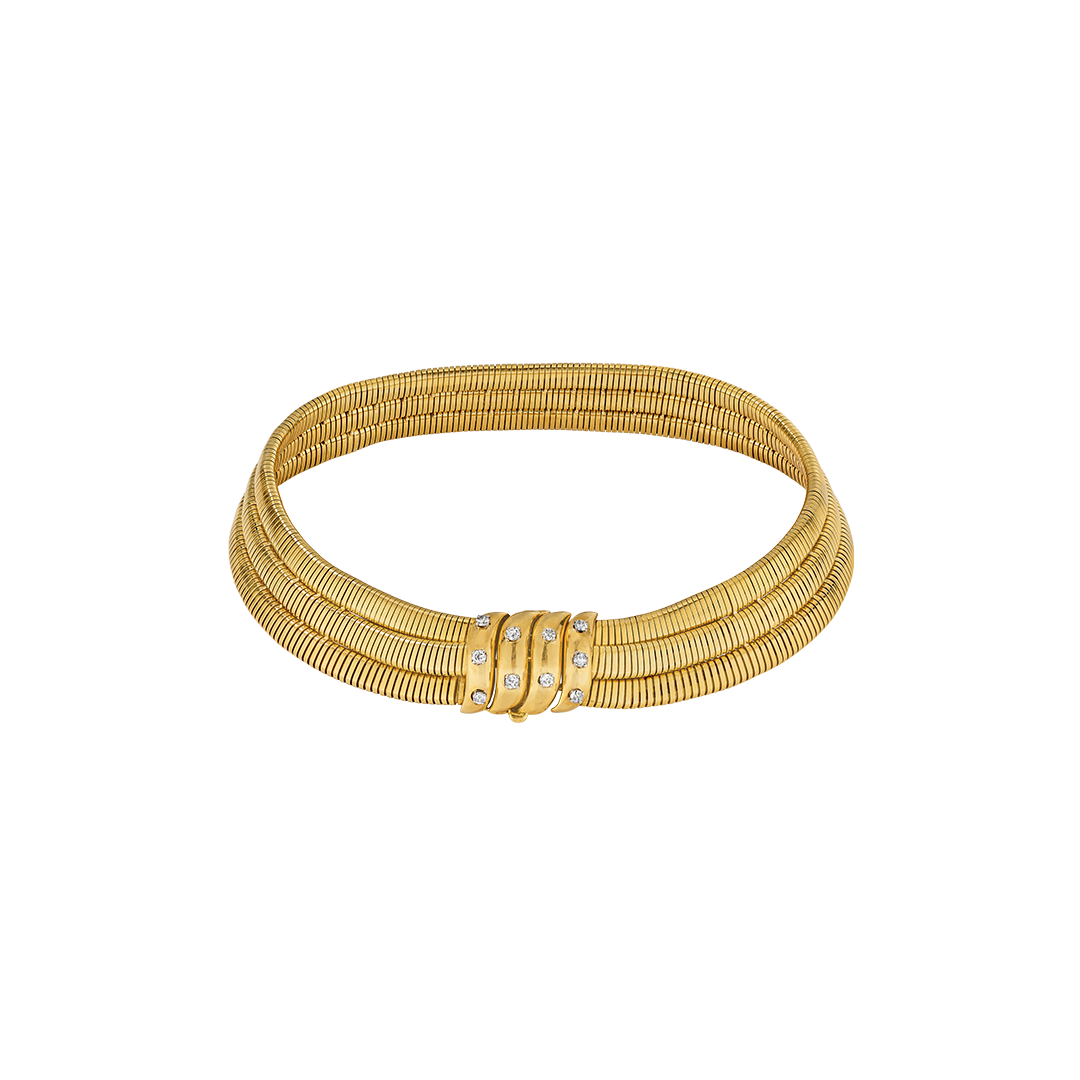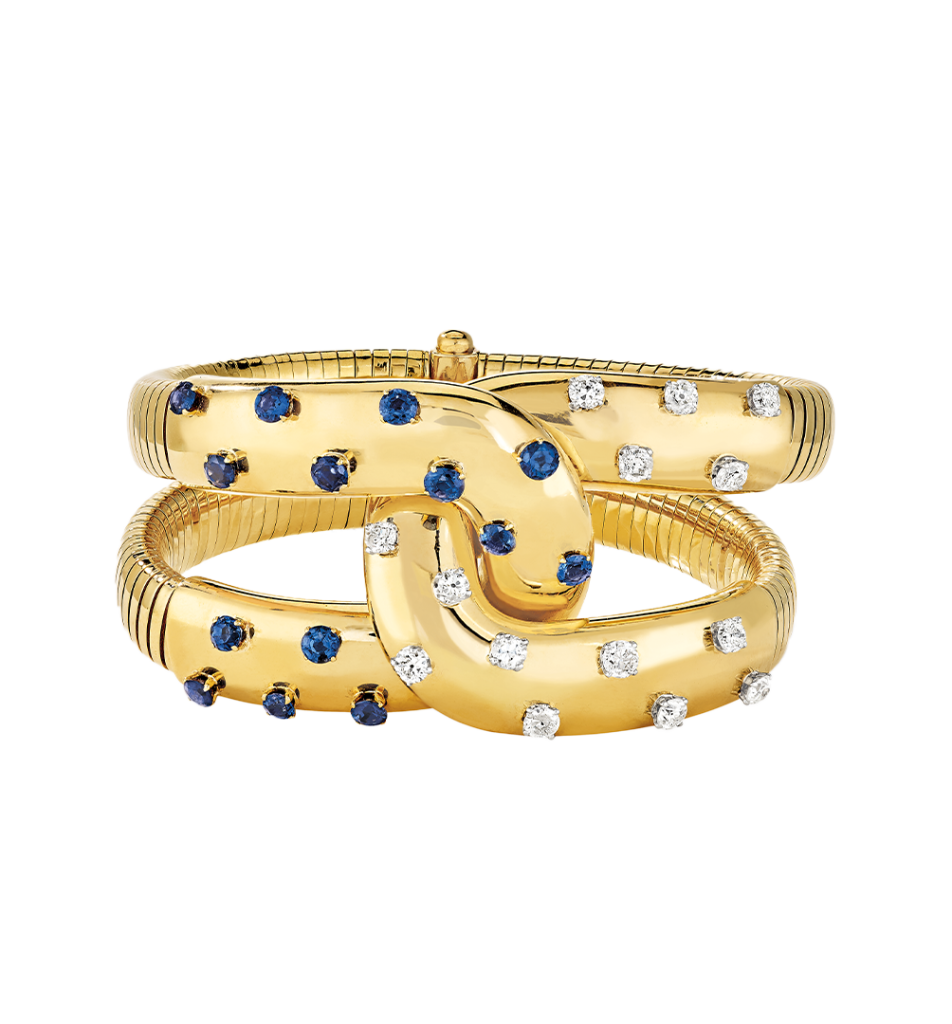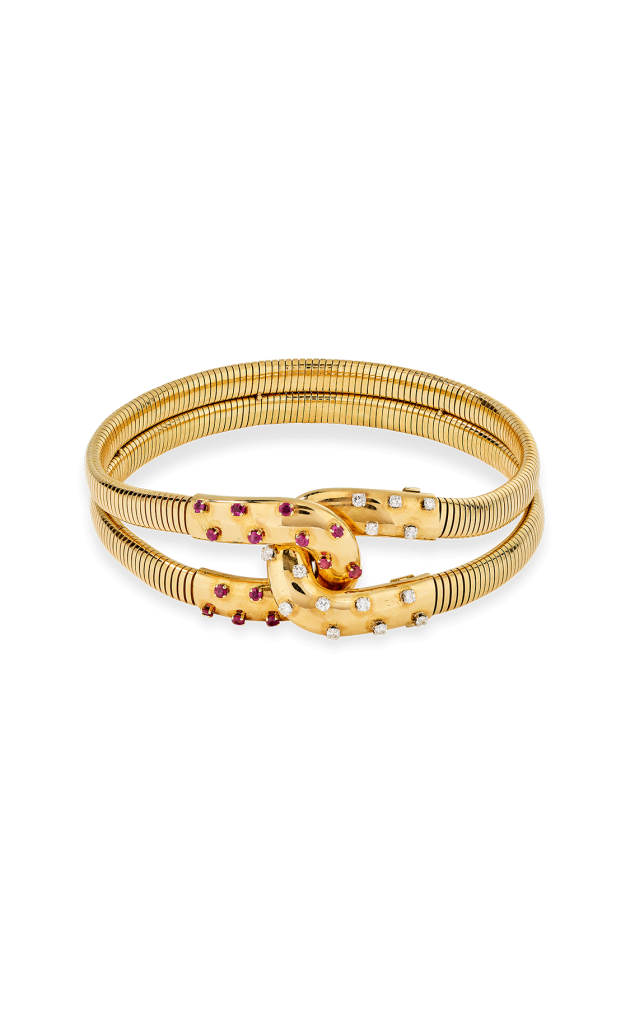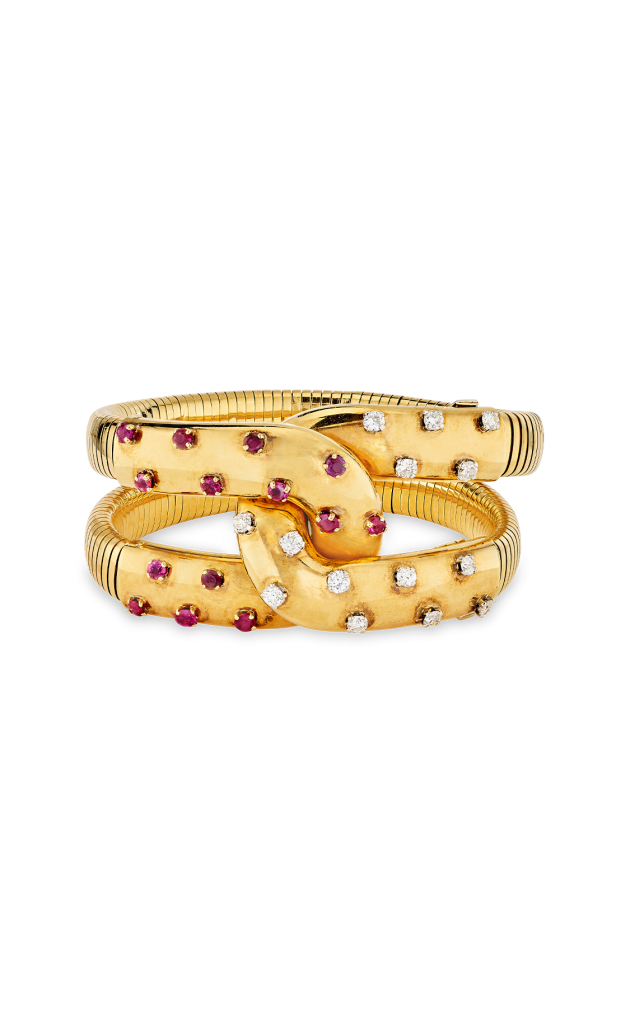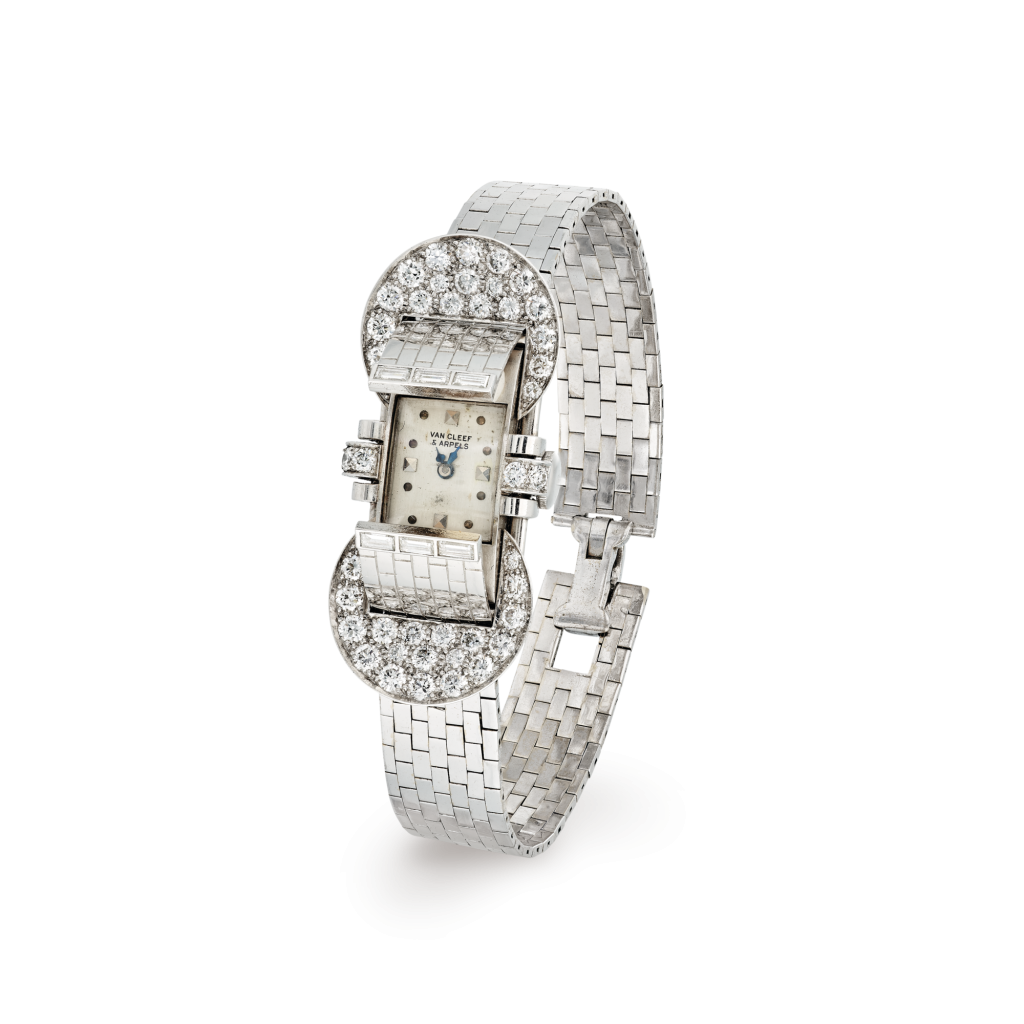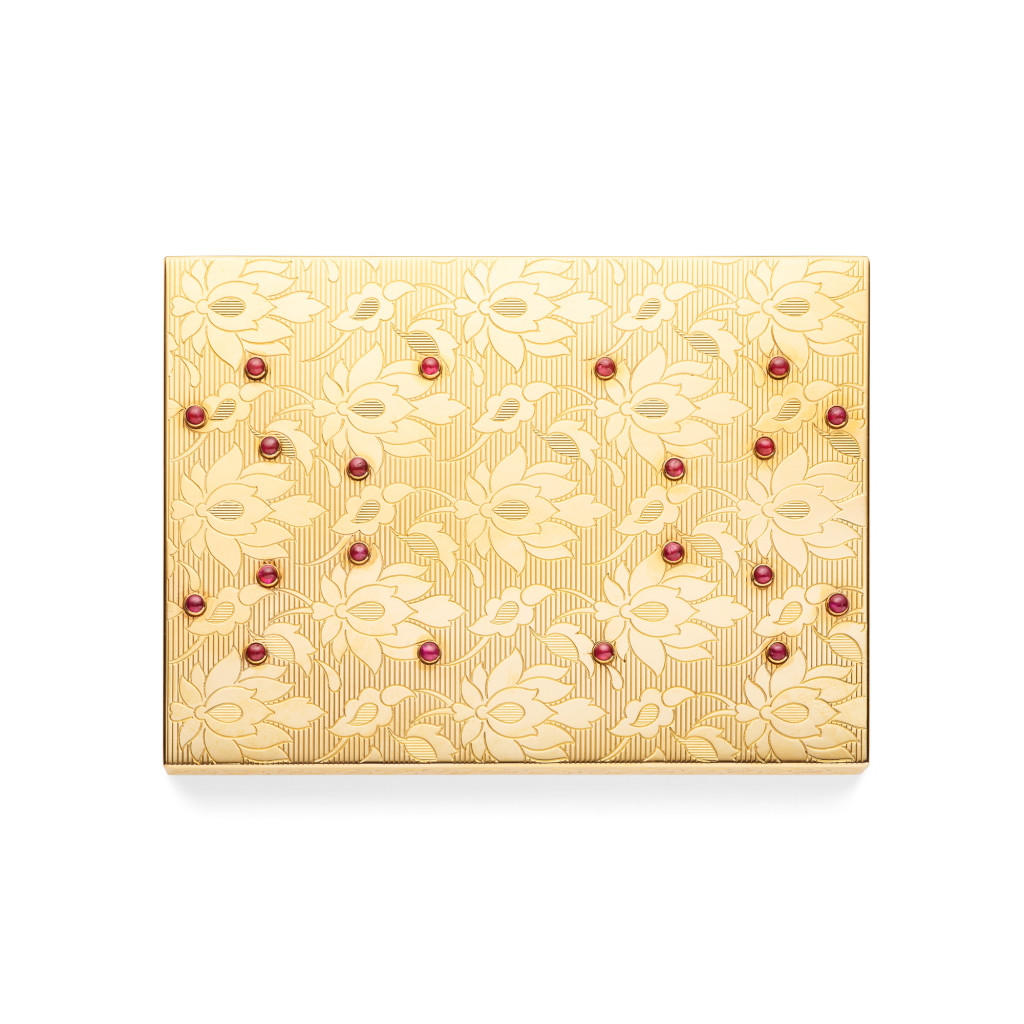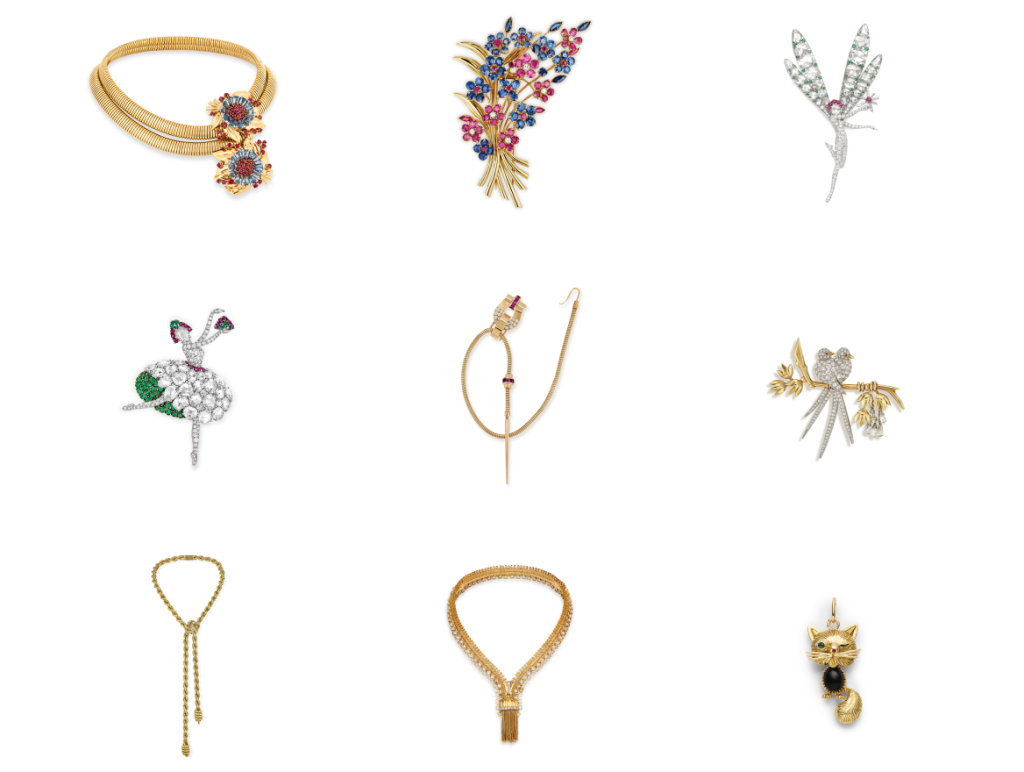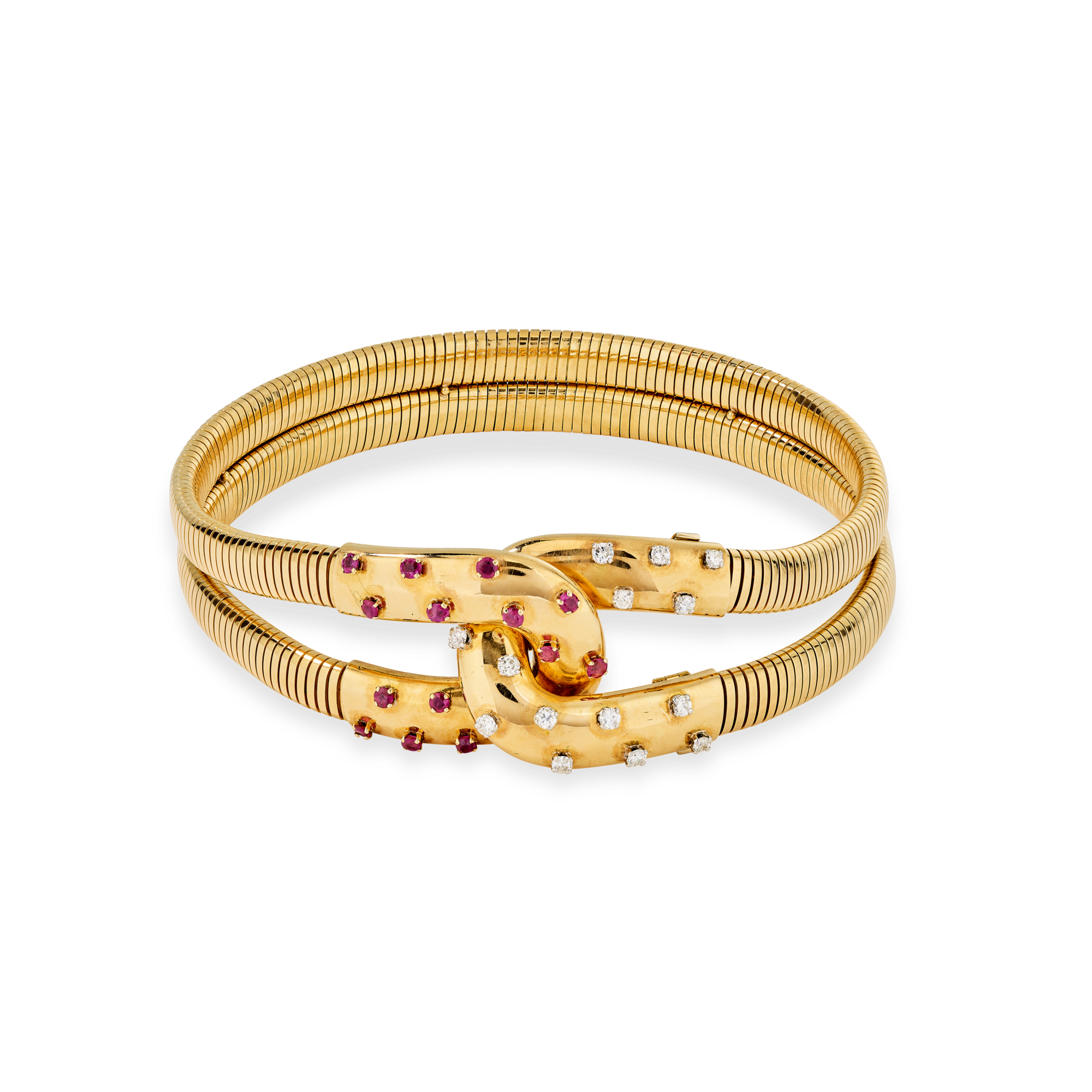
Belle Hélène necklace
Creation details
- Creation year 1946
- Stone Diamond
- Stone Ruby
- Material Gold
- Usage Necklace
- Dimensions 330 mm
With its Tubogas chain, the Belle Hélène or Fer à cheval (Horseshoe) is one of the most representative jewelry lines of the 1940s…
This choker necklace and accompanying bracelet are composed of two rows of snake chain with a mirror-polished yellow gold horseshoe motif at either end. The two horseshoes interlock, and are dotted with circular claw-set gems, with diamonds on one and rubies on the other.
The snake chain is part of the “spirotube” family, which is distinguished by the fact that it does not use links, but rather consists of coiling two ribbons of yellow gold around a mandrel. Both ribbons have been hollowed out to form a gutter, one of which is coiled with the groove facing inward, while the other faces outward. This set-up is then heated to solder the two coils so that they connect once the mandrel has been removed. This technique creates a chain of the utmost flexibility.1Jacques Lenfant, Le livre de la chaîne (Paris: Éditions Scriptar, 2010).
Creations derived from Tubogas
The circular-section snake chain had been used by the Maison since the mid-1930s, mainly for bracelet watches like the Padlock watch, espousing the wrist in a flexible manner. From 1938, the flexibility of the Tubogas was the inspiration behind a novel transformable piece, the Passe-Partout necklace, created by the Maison’s designers. Thereafter, it was increasingly widely used throughout the following decade.
Multiple variations
In January 1946, a double-row snake chain necklace provided a new variant with a central motif composed of four yellow gold braids and star-set diamonds that hid the clasp, as with the Passe-Partout necklace. In May of the same year, this model evolved to display two horseshoe motifs framing a brilliant-cut diamond sphere. By June, the two horseshoe loops had been lengthened and intertwined, thus giving the Belle Hélène necklace its lasting form. Four months later, another variant appeared with a “criss-cross clasp.” The central motif gradually lengthened to become a polished yellow gold strap into which the snake chain was inserted.
Esthetics of 1940s
The name Belle Hélène did not appear until October 1946, its multiple forms featuring diamonds, rubies, and sapphires. These interlocking horseshoe forms were not only found on necklaces, but also on rings, earrings, and bracelets. Belle Hélène pieces were produced in quantity during the second half of the 1940s, and underwent a revival in the 1980s, when the retro style was back in vogue.
To go deeper
